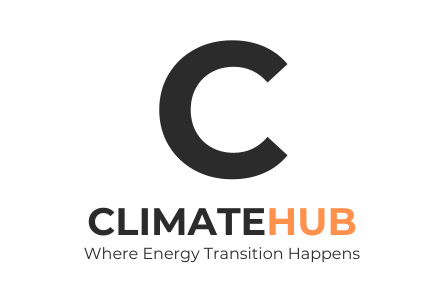- ClimateHub
- Posts
- ClimateHub Insights Newsletter #1
ClimateHub Insights Newsletter #1
Hey! Welcome to the ClimateHub newsletter - your summary of what's happening inside the climate tech community, and how we are progressing to reach Net Zero in 2050. New to ClimateHub? Try out previous posts and our website.
STATE OF NATION
Amidst the war in Ukraine and fears of economic recession, the energy markets are doing well.
Brent is now around $80/barrel, and WTI $74/barrel
Gas prices are in a downward trend in the last months, with Dutch TTF being at 58 EUR/MWh. Yet cold weather is forecast for the second week in February so the price may increase.
EU Carbon Permits reached 100 EUR/ton for a short while on the 1st of February
INDUSTRY FOCUS - WIND
2023 will be a painful year for Western turbine OEMs. Vestas Missed Full-Year Revenue Guidance, while Siemens Gamesa recorded EUR 760 million loss in the first quarter of 2023 due to higher warranty and service maintenance costs. Moreover, Western OEMs need to bear higher costs for turbines that were sold … a few years ago before COVID and at way lower inflation.
Meanwhile, On 13th January, Mingyang Smart Energy unveiled its MySE 18.X-28X offshore turbine platform, which has a nameplate rating of 18 MW and gives Mingyang the potential to go “beyond 18 MW”. Western firms have giant turbines of their own as well: Vestas, Siemens Gamesa, and GE have turbines rated at 15 MW, 14 MW, and 14 MW respectively.
China dominates the market for the supply and processing of rare earth materials, as well as steel. It’s worth observing neodymium- relevant for generators and permanent magnet direct-drive turbines (used more offshore). The control of the supply chain and large domestic installations give a significant edge. Although Western OEMs still dominate in Europe (RWE last month picked Siemens Gamesa to supply its flagship SG14-236DD machines for the 1GW Thor offshore wind farm in Denmark), the global balance of power is being shaken.
The emergence of 18MW Chinese turbines will definitely affect the dynamics of installations in new markets opening up in Southeast Asia, Australia, New Zealand, and India. While Europe still struggles with the lengthy and bureaucratic permitting processes, there will be new battlegrounds where we will get to see Chinese and western turbine makers go head-to-head with giant turbines.
Given the financial pressure, ClimateHub predicts that in 2023, Western firms will focus on profits over volumes, and thus reduce their total installations. They will also face more pressure from Chinese rivals in global markets.
INVESTMENTS & PARTNERSHIPS
HYDROGEN - German energy company RWE has ordered two 100-megawatt proton exchange membrane (PEM) electrolyzers from Linde Engineering for its GET H2 hydrogen project.
STEEL - Massachusetts-based company, Boston Metal raised $120M in funding to decarbonize the steel industry by producing steel without greenhouse gas emissions.
BATTERIES - The shining star of a British battery startup ecosystem - Britishvolt, is over. The company collapsed into administration despite significant government funding, Glencore backing, and ambitious plans for a Gigafactory in Blyth, UK. No orders, or delays in factory construction, made owners decide to terminate the venture.
MOBILITY - EV startup Rivian is laying off 6% of its workforce, or about 840 employees, to conserve cash as it prepares for a potential price war in the EV industry. On the other hand, GM announced a direct, $650 million investment into Lithium Americas this week. The money will help develop a mine in Nevada that could produce enough lithium for 1 million EVs each year.
CLIMATE TECH SOLUTION IN THE SPOTLIGHT
Climeworks is a Swiss company, that develops, builds, and operates direct air capture (DAC) machines, which capture CO₂ directly from the air. The air-captured carbon dioxide can either be recycled and reused as a raw material or completely removed from the air by safely storing it underground, permanently. Founded in 2009 by engineers, Christoph Gebald and Jan Wurzbacher, Climeworks was built with the vision to inspire 1 billion people to remove CO₂ from the air and is now the leader in technological carbon removal.
In 2021, Climeworks launched its flagship facility called Orca which captures around 4,000 tons of CO2 per year. Orca is currently the largest DAC plant in the world
The company is now targeting removing 500,000 tons by the end of the decade
It charges individuals who purchase carbon offsets up to $1,200 per ton of CO2 and around $600 per ton for bulk purchases.
Climeworks aims for costs to come down to $200 – $300 a ton by 2030, and $100 to $200 by 2035 when its operations are at full scale. Orca’s costs are estimated at 10-15 MUSD
Bill Gates is one of the Climeworks investors and among its clients are companies like Microsoft and Stripe that are buying captured CO2

